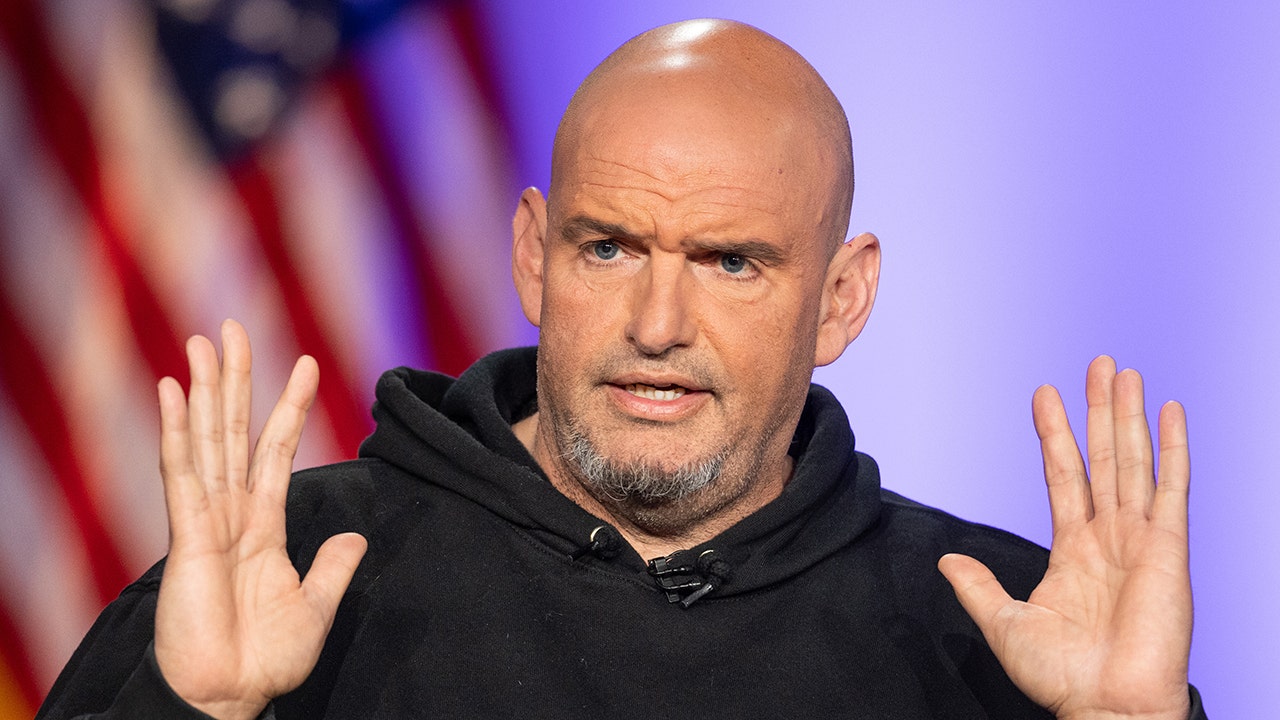Business
What You Can Learn About Job-Hunting From Dating Apps. Really.

love-bombingsituationshipghosting
Anyone who has ever interviewed for a job has received this wisdom from a gainfully employed friend: “Remember, you’re interviewing them too!” Those who have spent time swiping on dating apps may have heard the same advice. There’s a reason for that.
The dating and job markets aren’t that different. “Recruiters just glance at your profile,” said Kyle Lagunas, head of strategy and principal analyst at Aptitude Research, a research-based advisory firm. “You’re going to have 15 seconds before they swipe.”
In both cases, we need to know what we want. A superficial attraction? Something deeper? And in both cases, we want to know what makes us desirable. Because we are convenient at the moment? Because it seems like we both want similar things?
So, using lingo from the dating world, here’s an advice manual for navigating the “dates” we go on when we are hunting for a job, with actionable takeaways. Remember, every time we accept a “date” with anyone in our desired industry, we are being evaluated — even if we believe it’s just a coffee with a childhood friend’s older sibling, or a 10-minute call with a longtime mentor.
These tips may or may not lead you to your dream job. But they will give you more information about the workplace cultures you are considering so that you can make informed decisions.
situationship
/sich-oo-AY-shuhn-ship/
Dating:
A relationship (usually lasting three months or more) that isn’t exclusive, even though one partner wants it to be. Usually, this is a way for one party to enjoy the perks of a relationship without accountability.
Job-hunting:
A job without health insurance and/or with less than a yearlong contract (or no contract at all).
Situationship employers (otherwise known as gig employers) frequently like to call you “a prospective member of their family” or highlight “contributing to a purpose” during the recruiting process.
For experts, this kind of language is a red flag. “They say they are a family, but they don’t say what kind of family,” said Martin McGovern, a career consultant and executive coach. “The boss might see you as a family member, but then as soon as the budget changes, they will hire an external cousin and fire you.”
The “making a difference” lingo is more often used today in spaces with precarity and low pay, especially in the nonprofit world, said Erin McGoff, a career coach.
Situationship employers rely on family and purpose language because, whether or not they have revealed it yet, they know they cannot offer you a long-term commitment or health insurance.
Do not fall into this trap! They are not your family — you barely know them, and they want to hire you without giving you benefits or a true commitment.
If you are offered this job and decide to take it, continue your job hunt. Your employer is not committed to you, so you don’t owe them anything.
imaginationship
/uh-maj-uh-NAY-shuhn-ship/
Dating:
An elaborate relationship with your crush in your head (for example, if you fantasize about becoming someone’s spouse, but they see you as a no-frills hookup).
Job-hunting:
The search for a paid job when a company is really looking for an unpaid intern.
Imaginationships can be a pink flag. Define the relationship: Only work free hours if you believe they will benefit your career in the long run.
Free hours can be a way to form a relationship with a mentor, but tread carefully; given the power imbalance, it can also be a way to be taken advantage of.
breadcrumbing
/BRED-kruhm-ing/
Dating:
After hooking up, one partner texting intermittently but resisting any kind of concrete plan to meet up again.
Job-hunting:
An employer asking for increasing amounts of work during a multistage interview process, without financial compensation.
Breadcrumbing (in the case of job interviews, uncompensated work) can be a red or pink flag, said McGoff, the career coach. “I hear from people being asked to do assignments that not only take up a lot of their time, but where they create valuable assets the company uses,” she said. There are exceptions: “You need to use common sense. If it’s a role you really want, you can go the extra mile.”
But it might be worth asking some questions in response to their request: How many candidates are they requesting this material from? How long should the assignment take you? What skills is the assignment meant to showcase? Will the company be using the deliverables for anything other than job consideration? What is the offer timeline?
Thank them for the information. Depending on their answers, McGoff suggested politely offering a truncated version of the assignment. If a company requests 30 posts and 20 reels of social-media content, for example, ask if it would be acceptable to send five posts and two short-form videos.
“Some companies budget for this, so you can always ask if this is a case where they can offer compensation for your time,” McGoff said. But, she added, “don’t ask in an entitled way. Say, ‘Since this will take me X amount of hours, I’m inquiring to see if you offer that.’”
You also can always direct them to previous examples of your work that showcase the skills they are testing for in the assignment.
Based on their answers to your questions, consider, carefully, whether continuing to pursue this job is worth your time.
love-bombing
/LUV-bahm-ing/
Dating:
Receiving compliments, gifts and other gestures of affection without a promise of exclusivity.
Job-hunting:
In the recruitment and offer stages, receiving flattery and promises of promotion rather than a reasonable starting salary.
Love-bombing can feel good, but it doesn’t pay the bills.
Use that flattery to push for a better salary — and point to inflation and other economic challenges to justify annual increases.
Ask for written promises of salary bumps and title changes (ideally, as part of your contract). It may not happen, but it doesn’t hurt to ask.
Dating:
Entering into an exclusive, romantic relationship.
Job-hunting:
Landing a job with at least a yearlong contract, health insurance and retirement benefits.
Cuffing in the job-search world isn’t necessarily a bad thing: If this is the gig you want, great. If not, use this position to look more appealing to other jobs. Only leave your current position once you have a better offer (however you choose to define “better”).
Dating:
Boasting about attention from other matches in order to seem more appealing.
Job-hunting:
An employer talking about how many applications it has received.
Whelming in the job-search world is best ignored.
Or, if you are being hired in a cohort, talk to other candidates who received offers. Try to deduce the percentage of candidates who, when offered a job at the company, take it. (As with college admissions, this is called the yield rate.)
Yes, they might have a lot of interested applicants. But are you one of them? You need to figure that out for yourself.
Bonus points if they drop the line “It is harder to get a job here than get into Harvard.” (Matthew Bahl, workplace market lead and vice president at the Financial Health Network, a nonprofit financial services consultancy, said that this line is particularly popular in the management and consulting worlds.)
Dating:
When, after a date or hookup, one person doesn’t respond to a follow-up message or call. (Generally, it is ghosting only after two nonresponses.)
Job-hunting:
When you don’t hear back from an employer after interviewing for a job.
Ghosting after interviews, sadly, is all too common. Follow up once, maybe twice.
Do not wait around after that.
Bahl also noted that ghosting can be a red flag. “Is this really a place you want to spend your time, before they’re even paying you? They’re already not showing you the level of respect you would want to have or you would expect to show them.”
Dating:
Ghosting someone, but then, after at least a few months, reaching out as though the ghosting never happened. (Sometimes it is fun to respond to these texts with a simple ghost emoji.)
Job-hunting:
Failing to respond to a professional contact who asked a question or favor, but later reaching out with a different question or favor.
Zombieing, unlike ghosting, might be a positive thing — or not: If a professional contact reaches out to you out of the blue, they probably are looking for something. Figure out what that is.
If this is a person with power over you (someone who makes more money than you, for example, or has the power to help you get a job), proceed, but carefully: They’ve ghosted you once, and they will likely do it again.
Dating:
Keeping someone on a “roster” in case your first choice doesn’t work out. Often, this comes in the form of a late-night text from a hookup (“You up?”). But sometimes serial monogamists also keep a hookup on the bench — just in case they break up with their current significant other.
Job-hunting:
Rejecting a candidate but trying to keep the person interested in case the first choice declines the offer.
Benching is normal in hiring. “Expect them to have a roster,” said McGovern, the career counselor. “Treat companies how they treat you — always have a backup plan, always be dating on the side of your job.”
McGoff agreed: “I’m a huge advocate for staying on the roster. I’m a huge advocate for seeing job interviews as a networking opportunity. And if you don’t get the job, it’s not that their door is closed forever. It’s still an open door. It’s just that right then it didn’t work out, but down the road it might.”
But this kind of practice can be a warning signal. Check Glassdoor, a site where companies are rated by current and former employees, to see if there are reviews that mention turnover rates. If employees stay at this company for less than a year, that flag turns from pink to red.
Watch how employees talk about current and past employees — assume this is how you will be talked about when you are not in the room.
If you can speak to the last person who held the position you are being considered for, try to figure out what their experience was. Assume that yours will be similar if you are offered and take this job.

Business
Big buildout begins at Port of Long Beach amid global trade uncertainty

A major terminal operator at the Port of Long Beach broke ground on a $365-million expansion project Friday, even as activity at the port has cooled recently in response to rising tariffs.
The terminal operator International Transportation Service plans to fill in a 19-acre area of water and extend the existing quay by 560 feet, which would allow larger ships to dock at the port.
The expansion would boost cargo-handling capacity by 50% and create jobs, the company said at a ground breaking ceremony Friday. The new terminal would be able to accommodate two vessels each capable of carrying 18,000 cargo containers.
“There is a demand coming for bigger ships,” said ITS Chief Executive Kim Holtermand. “This project strengthens America’s supply chain by investing in infrastructure the right way.”
The leap comes after container movement through the Port of Long Beach dropped sharply in recent months.
President Trump’s frequent changing of tariffs on countries including key trade partners Canada and Mexico have stunted global trade, prompting concern from public officials, laborers and business leaders.
The Port of Los Angeles has also experienced a slowdown and reported that job opportunities at the port were down by half in June.
The number of containers processed at the Port of Long Beach in May is down more than 8% from last year, and loaded containers being shipped out of the port, known as loaded exports, are down more than 18%. At the Port of Los Angeles, loaded exports dropped 4% from last May.
Shipping underway at the International Transportation Service terminal, which is undergoing a $365-million terminal expansion.
(Allen J. Schaben / Los Angeles Times)
Port of Long Beach Chief Executive Mario Cordero said the port is capable of progress in times of crisis and has learned from its perseverance through the pandemic.
“We are most definitely in a period of uncertainty in this industry,” Cordero said. “But there is one certainty here at the port. We will continue to build,” he said.
A large group gathered to celebrate the start of the project in Long Beach, including Long Beach Mayor Rex Richardson and longshore and warehouse workers union ILWU 13 President Gary Herrera.
Business
Commentary: How Big Business killed the 'click-to-cancel' FTC rule, which would have saved consumers billions

When consumers are asked to identify their most frustrating interaction with businesses, the obstacles to canceling an automatically-renewing service invariably rank high.
Some companies require cancellations to be done by phone, or even in person. Even finding a cancellation option on a merchant’s website can be daunting. Cancellation can require multiple steps online, or waiting for hours on hold — before a call just gets dropped without warning.
Millions of consumers have ended up paying unwittingly for services or goods they no longer want or need, sometimes for years.
So unsurprisingly, the Federal Trade Commission last year finalized a “click to cancel” rule, requiring that it be as easy to cancel a recurrent subscription as it is to sign up.
Everything wants to be a subscription now. Firms have identified this as a key revenue source.
— Ex-FTC Chair Lina Khan
Also unsurprisingly, the rule came under immediate attack from Big Business, via a federal lawsuit filed last year by the U.S. Chamber of Commerce and other business lobbies.
Possibly most unsurprisingly, a three-judge appeals court panel in St. Louis (two appointed by Trump and one by George H.W. Bush) threw out the rule on Tuesday — less than a week before it was to take effect and after more than five years of painstaking administrative and regulatory work — on a legal technicality.
Whether the rule will be resurrected by today’s FTC is unclear; the commission told me by email it’s still “considering our options.” The FTC’s two GOP commissioners — including Andrew Ferguson, who was elevated to the chairmanship by Donald Trump in January — dissented in the 3-2 vote last year to make the rule final. Ferguson succeeded Biden appointee Lina Khan, who told podcaster Pablo Torre last month that the rule had “enormous support” from the public.
The commission has sued several companies over their automatically-renewing subscription services, including Amazon, Adobe and Uber, which it sued as recently as April. Those cases are pending.
In announcing the Uber lawsuit, Ferguson observed that “Americans are tired of getting signed up for unwanted subscriptions that seem impossible to cancel” and said the commission “is fighting back on behalf of the American people.”
Before delving more deeply into the court’s ruling, here’s some background on why the rule was drafted in the first place.
Its target was “negative option” programs, in which businesses assume customers have consented for automatic renewals unless the customers explicitly cancel. These programs were pioneered by book-of-the-month clubs and similar others, which delivered merchandise to members unless the members told them to skip their monthly offerings.
When the FTC first moved against this practice with a 1973 rule, its quarries were 72 book clubs and four record clubs. The practice mushroomed, especially during the pandemic, when people signed up for automatic deliveries of goods or streamed entertainment so they wouldn’t have to leave the house.
By 2022, businesses were making a mint from auto-renewals, relying on “lapses in consumer memory and on a lack of fluency with technology,” as 11 law professors told the appeals judges in a friend-of-the-court brief.
Seniors who forget what they have signed up for and can’t easily navigate online procedures and parents of young children who get snared into signing up for subscriptions tend to be the most common victims.
Opinion polls revealed that more than half of all consumers had faced unwanted charges at some point from these programs. Almost three-quarters of respondents to a survey by JPMorgan Chase said they were wasting more than $50 a month on automatic payments for goods or services they no longer needed. A cottage industry of firms purporting to help consumers track down their forgotten subscriptions sprung up — typically operating on the same subscription model.
Think all this was accidental? Think again.
When the FTC started investigating negative option programs, “we were stunned to see just how deliberate a business strategy it is,” Khan, who oversaw the regulation’s development, told Torre.
In 2019, the FTC began working on expanding its 1973 regulation of book clubs to cover all forms of negative option marketing and published a final rule last November. The rule required businesses to clearly disclose all costs and terms of their programs, to obtain explicit enrollment consent from customers and to provide a means of cancellation that is “at least as easy to use” as signing up. In other words, if it took two clicks to sign up, it would have to take no more than two to cancel.
In a parallel effort, in 2023, the FTC sued Amazon over the enrollment and cancellation procedures for its Prime memberships, which afford enrollees discounted shipping fees and access to Amazon’s video and music streaming services for annual or monthly fees.
The agency asserted that the giant online retailer had “knowingly duped millions of consumers into unknowingly enrolling in Amazon Prime” and “knowingly complicated the cancellation process for Prime subscribers who sought to end their membership.”
Amazon enticed nonmember customers into signing up for Prime by showering them with repeated come-ons while they tried to finalize a purchase, the FTC said. Some of these messages, the FTC said, obscured that customers who responded to seemingly free offers were actually signing up for Prime.
After the FTC told Amazon it was investigating its approach, the company made the signup process more transparent. The agency asserted, however, that even after internal analyses showed Amazon executives that having customers “sign up without knowing they did” was a major “customer problem,” higher-ups pushed back against efforts to clarify the sign-up process online.
The reason, the agency said, is that the “clarity improvements” drove subscription numbers down. Prime executives ultimately “pulled the plug” on the changes, the FTC said.
Perhaps more frustrating for consumers was what the FTC labeled the “labyrinthine” procedure to cancel Prime memberships. This was known inside Amazon, the FTC said, as the “Iliad flow,” a term that evokes the seemingly endless Trojan War as described in Homer’s epic. It was, as the agency laid it out, a “four-page, six-click, fifteen option” cancellation process.
Amazon pared down the process in early 2023, shortly before the FTC filed its lawsuit but after the agency sent it civil investigative demands — a form of subpoena — related to the signup and cancellation processes.
In its answer to the lawsuit, Amazon said that its signup and cancellation procedures complied with federal law by “prominently and repeatedly disclosing key terms, obtaining express informed consent from consumers, and offering a simple cancellation method.” The company also disputed the FTC’s “characterization” of its enrollment and cancellation practices.
The claims in the FTC lawsuit, the company said, are “factually unsupported, legally unprecedented, and wholly antithetical to the FTC’s mission of protecting consumers.” It said that it had established an internal team to analyze customer complaints, and that although the team’s studies arose from “anecdotal feedback expressed from a relatively small number of customers,” it “took that feedback seriously” and made efforts to address the concerns.
The FTC lawsuit is currently scheduled to go to trial in Seattle on Sept. 22.
Businesses that fear the sting of the FTC’s crackdown maintained that the agency had been trying to stamp out a consumer benefit. Auto-renew terms, argued purveyors of home service contracts in a friend-of-the-court brief, appreciate automatic renewals “because they take one thing off their plate given busy workdays, hectic family schedules, or other demanding circumstances.”
The appeals judges expressed some empathy with the victims of marketing scams. “We certainly do not endorse the use of unfair and deceptive practices in negative option marketing,” they wrote.
But they subjected the commission’s rulemaking procedure to pitiless quibbling. The commission had failed at one point to issue a “preliminary” regulatory analysis of its proposed rule, as required by law in some cases. But the FTC did issue a “final” analysis, which was available for public comment.
Yet there could be little in a preliminary analysis that the final analysis wouldn’t cover, and businesses had every opportunity to pick it apart (as they did). Nevertheless, because of the FTC’s shortcut, the judges said, the business community “lost a notable opportunity to dissuade the FTC” from issuing the rule.
Is that plausible? Industry could hardly be unaware that the rule was under consideration; businesses had mobilized to protect negative option marketing starting at least in 2019, and they hardly lacked for resources to “dissuade” the commission.
This ruling looks more like a reflection of the observation of Dickens’ Mr. Bumble in Oliver Twist: “The law is a ass.” The rule addressed a known consumer abuse that had received bipartisan condemnation in Congress over the years. In developing the rule, the FTC solicited public comment at virtually every stage.
Moreover, the rule addressed a marketing process that is destined to keep mushrooming. Companies that used to market their products on a buy-once, use-forever basis have turned to subscription models that allow them to collect fees once a month or annually into the limitless future. If buyers forget that they subscribed and don’t notice the regular charges on their credit card or bank statements, so much the better.
“Everything wants to be a subscription now,” Khan told Torre. “Firms have identified this as a key revenue source, and they’ve noted that to fully monetize that, they need to make it as easy to sign up and as difficult to cancel” as they can. So they implemented “explicit strategies to make that happen.”
Three conservative judges have given those strategies new life. It’s up to the FTC to make its chairman’s promise a reality.
Business
South Korea struggles with uncertainty over U.S. trade negotiations

SEOUL — As the Trump administration has been churning out trade threats this week, South Korea, a crucial trading partner and military ally, has been struggling — like many — to navigate the uncertainty that looms over trade negotiations with Washington.
On Monday, Trump sent a letter dictating new tariff rates to 14 countries including South Korea, which was hit with a 25% tax. The levies were set to kick in Tuesday, but were postponed to Aug. 1. Trump left the door open for another extension, telling reporters the new deadline was “firm but not 100% firm,” depending on what trade partners could offer.
But it’s unclear whether the additional three weeks will be enough to resolve the longstanding disagreements between Washington and Seoul. One of the biggest points of contention is South Korea’s auto industry, which was the third biggest exporter of automobiles to the U.S. last year.
Although White House Press Secretary Karoline Leavitt said Monday that Trump’s phone was ringing “off the hook from world leaders all the time who are begging him to come to a deal,” the tone in Seoul has been reserved.
Commerce Secretary Howard Lutnick, left, walks across the tarmac on Sunday as President Trump boards Air Force One. On Monday, Trump dictated new tariff rates to 14 countries, including a 25% tax on South Korea.
(Jacquelyn Martin / Associated Press)
Last week, ahead of the initial July 8 deadline, South Korean President Lee Jae Myung, who took office last month, said “it’s difficult to say for certain that we can finish [the trade talks] by July 8.”
“Both sides are doing their best and we need to come up with an outcome that can be mutually beneficial to both parties, but we still have not yet been able to clearly establish what each party wants,” he added.
Since then, senior South Korean trade officials have been dispatched to Washington with the hopes of bringing a deal within striking distance.
“It’s time to speed up the negotiations and find a landing zone,” Trade Minister Yeo Han-koo said after meeting with U.S. Commerce Secretary Howard Lutnick on Monday.
So far, the only two countries that have struck new trade deals with the Trump administration are the U.K. and Vietnam.
But the Lee administration has maintained a note of caution. At a high-level meeting held Tuesday to discuss the current state of the negotiations, Lee’s presidential chief of staff for policy, Kim Yong-beom, reportedly emphasized the “national interest” over speedy dealmaking, instructing officials to support tariff-affected industries and “diversify” South Korea’s export markets.
Under a decades-long free trade agreement, South Korean tariffs on most U.S. goods are already zero, meaning there are fewer concessions Seoul can offer, analysts say. And on the key points of contention such as automobiles, there is little daylight to be found.
“This announcement will send a chilling message to others,” Wendy Cutler, vice president of the Washington-based Asia Society Policy Institute and former deputy U.S. trade negotiator, said in a post on X.
Trump’s letter also suggested that the U.S. will “not be open to reprieves” from sectoral tariffs, including those on automobiles, Cutler added.
South Korean trade officials have stressed that removing or significantly reducing the 25% tariffs on cars is a top priority.

White House Press Secretary Karoline Leavitt holds a trade letter sent by the White House to South Korea during a news conference on Monday.
(Al Drago / Bloomberg via Getty Images)
But South Korean cars from Hyundai and Kia factor significantly into the $66-billion trade deficit that Trump has decried as unfair. Last year, South Korea was the third biggest exporter of automobiles to the United States, to the tune of $34.7 billion. It bought $2.1 billion worth of cars from the U.S.
Until now, the country’s flagship automakers Hyundai and Kia have been able to sidestep any major tariff shocks, achieving instead record sales in the first half of the year by selling existing inventory in the U.S.
But many believe it is only a matter of time until they will have to raise vehicle sticker prices, as some competitors have done. Both companies’ operating profits are now forecasted to hit double-digit declines compared with the previous year.
The U.S. has also reportedly demanded concessions that touch on sensitive issues of food or national security in South Korea — a far harder sell to the public than the expanded manufacturing cooperation that South Korea has sought to center in the trade talks.
Among these are opening up South Korea’s rice market to U.S. imports and allowing Google to export high-precision geographic data to its servers outside of South Korea.
As an essential crop that represents a significant portion of farmers’ incomes, rice is one of the few heavily protected goods in South Korea’s trade relationships. Under its free trade agreement with the United States, Seoul imposes a 5% tariff on U.S. rice up to 132,304 tons, and 513% for anything after that.

U.S. Army soldiers attend a ceremony last month in Dongducheon, South Korea. A 2021 report from the U.S. Government Accountability Office found that it cost $19.2 billion to maintain American troops in South Korea from 2016 through 2019.
(Kim Jae-Hwan / SOPA Images via Getty Images)
The South Korean government has long denied Google’s requests to export high-precision geographic data — which is used for the company’s map services — on the grounds that it could reveal sensitive military sites that are essential for defense against North Korea. Last year, Ukraine accused Google of exposing the locations of some of its military systems to Russia.
Equally vexing are Trump’s long-running demands that Seoul should pay more to host the some 28,500 U.S. troops stationed in South Korea.
“South Korea is making a lot of money, and they’re very good. They’re very good, but, you know, they should be paying for their own military,” Trump said at a White House Cabinet meeting on Tuesday, adding that he told South Korea it should pay $10 billion a year.
Over a four-year period from 2016 through 2019, the total cost of maintaining U.S. troops in South Korea was $19.2 billion, or around $4.8 billion a year, according to a 2021 report from the U.S. Government Accountability Office. Over that period, South Korea footed about 30% of the total annual costs, in addition to providing indirect financial support such as waived taxes or foregone rents.
Under the Special Measures Agreement, the joint framework that governs this arrangement, Seoul’s payments have grown over time. Under the latest version, which covers 2026 to 2030, Seoul’s annual contribution beginning next year will be $1.19 billion, an 8.3% increase from 2025, and will increase yearly thereafter.
Trump’s demand for nearly 10 times that — along with the threats that the U.S. might pull its troops from the country — has previously drawn widespread outrage in the country, spurring calls by some for the development of South Korea’s own nuclear arsenal.
“The Special Measures Agreement (SMA) guarantees stable conditions for U.S. troops stationed in Korea and strengthens the joint South Korea – U.S. defense posture,” a spokesperson for South Korea’s Ministry of Foreign Affairs said in response to Trump’s comments.
“Our stance is that the South Korean government will adhere to the 12th SMA, which was agreed upon and implemented in a legitimate manner.”
-

 Business1 week ago
Business1 week agoSee How Trump’s Big Bill Could Affect Your Taxes, Health Care and Other Finances
-

 Culture1 week ago
Culture1 week ago16 Mayors on What It’s Like to Run a U.S. City Now Under Trump
-

 News1 week ago
News1 week agoVideo: Who Loses in the Republican Policy Bill?
-

 Politics1 week ago
Politics1 week agoVideo: Trump Signs the ‘One Big Beautiful Bill’ Into Law
-

 Science1 week ago
Science1 week agoFederal contractors improperly dumped wildfire-related asbestos waste at L.A. area landfills
-

 Technology1 week ago
Technology1 week agoMeet Soham Parekh, the engineer burning through tech by working at three to four startups simultaneously
-

 Politics1 week ago
Politics1 week agoCongressman's last day in office revealed after vote on Trump's 'Big, Beautiful Bill'
-

 World1 week ago
World1 week agoRussia-Ukraine war: List of key events, day 1,227















